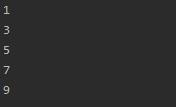2.Python
Posted 最近饭吃的很多
tags:
篇首语:本文由小常识网(cha138.com)小编为大家整理,主要介绍了2.Python相关的知识,希望对你有一定的参考价值。
1.运算符
a.结果是值
算术运算 a=10*10
赋值运算 a=a+1
b.结果是布尔值
比较运算 a=1>5
逻辑运算 a=1>6 or 1==1
成员运算 a="XX" in "AA"
1 name = "郑建文" 2 3 if "建文" in name: 4 print(\'OK\') 5 else: 6 print(\'Error\')
2.基础数据类型
a.数字
(1)int 字符串转换为数字
base=16 将数字用十六进制表示为十进制
num = "0011" v = int(num, base=16) print(v)
num =\'A\' v = int(num, base=16) print(v)
(2) bit_lenght 当前数字的二进制,至少用n位表示
b.字符串
(1) .capitalize() 首字母大写
(2) .casefold() / .lower() 所有变小写
(3).center(a,b) 长度为a b可有可无,但是只能是一个字符,有的话用于空白填充
test=\'yuyu\' v=test.center(20,"*") print(v)

(4).count(\'a\',b,c) 去字符串中寻找,寻找子序列\'a\'出现的次数,b和c是数字可有可无,表示在b-c范围之间查找
(5).endswith(格式同上) 判断字符串是否以指定字符或子字符串结尾
.startswith() 方法用于检查字符串是否是以指定子字符串开头,如果是则返回 True,否则返回 False。
(6).expandtabs() 方法把字符串中的 tab 符号(\'\\t\')转为空格,tab 符号(\'\\t\')默认的空格数是 4
为了分割字符串
test=\'sjahm\\tajajjj\\taaaaaa\\nsjahm\\tajajjj\\taaaaaa\\nsjahm\\tajajjj\\taaaaaa\\n\' v=test.expandtabs(6) print(v)

(7).find(\'字符串\')从开始往后找,找到第一个之后,获取其位置,找不到返回-1
.index(\'字符串\')找不到报错
(8)格式化,将一个字符串中的占位符替换为指定的值
test = \'i am {name}, age {a}\' print(test) v = test.format(name=\'alex\',a=19) print(v)
test = \'i am {name}, age {a}’ v = test.format_map({"name": \'alex\', "a": 19})
(9).isalnum() 字符串中是否只包含 字母和数字,返回布尔值
.isalpha() 是否是字母,汉字 返回布尔值
(10)当前输入是否是数字,输入必须是字符串类型,不能是int型,返回布尔值
一,.isdecimal()只能判别阿拉伯数字
二,isdigit()能判断阿拉伯数字和带圈圈的数字②
三,isnumeric()上面干的它都能干,,还能判断中文一二三
(11).isprintable()是否存在不可显示的字符比如\\t制表符,\\n换行符
(12).isspace()判断是否全部是空格
(13)判断是否是标题
test = "Return True if all cased characters in S are uppercase and there " v1 = test.istitle() #判断是否是标题 print(v1) v2 = test.title() #转换为标题格式 print(v2) v3 = v2.istitle() print(v3)

(14)☆☆☆☆☆☆将字符串中的每一个元素按照指定分隔符进行拼接
test = "你是风儿我是沙" print(test) v = "_".join(test) print(v)

(15)判断是否是大小写 test.islower() test.isupper()
转换成大小写 test.lower() test.upper()
大小写转换 test.swapcase()
(16)移除指定字符串
test.strip()头尾包含有指定字符序列中的字符或空格就删除
test.lstrip()用于截掉字符串左边的空格或指定字符 有限最多匹配
test.rstrip()用于截掉字符串左边的空格或指定字符
test = "jkkjhgkjkjl" v = test.lstrip(\'jk\')
print(v)

(17)对应关系替换
test ="aeiou" test1 = "12345" v = "asidufkasd;fiuadkf;adfkjalsdjf" m = str.maketrans("aeiou", "12345") new_v = v.translate(m) print(new_v)

(18)分割成三部分
test = "testasdsddfg" v = test.partition(\'s\') #从左开始分割成三部分,以s为中心 print(v) v1 = test.rpartition(\'s\') #从右开始分割成三部分,以s为中心 print(v1)

(19)从左分割成指定个数 test.split(\'s\',指定个数)
从右分割成指定个数 test.rsplit(\'s\',指定个数)
(20)分割,只能根据换行符分割,true,false决定是否保留换行符
test = "asdfadfasdf\\nasdfasdf\\nadfasdf" v = test.splitlines(False) print(v)

(21)是否是有效标识符 test.isidentifier()
(22)将指定字符串替换为指定字符串
test = "alexalexalex" v1 = test.replace("ex",\'bbb\') print(v1) v = test.replace("ex",\'bbb\',3) #替换前三个 print(v)

(23)创建一串数字,用只有for循环才能全部表示出来
r1=range(1,10,2) print(r1) for item in r1: print(item)

(24)根据用户输入的值,输出每一个字符以及当前字符所在的索引位置
test=input("请输入") l=len(test) r=range(0,l) for item in r: print(item,test[item])

(25)字符串合并
name = "zhengjianwen" age = "18" info = name + age print(info)

练习题
1.利用下划线将列表的每一个元素拼接成字符串,li=[\'alex\',\'eric\',\'rain\']
我写的
li=[\'alex\',\'eric\',\'rain\'] a=\'\' l=len(li) v=range(l) for test in v: a=a+\'_\'+li[test] print(a)
2.计算输入的内容中有几个十进制数字?几个字母?
我写的
content=input(\'请输入\')
l=len(content)
r=range(0,l)
zimu=0
num=0
for item in r:
if content[item].isalpha():
zimu=zimu+1
elif content[item].isdigit():
num=num+1
print(zimu,num)
3.
.
我写的
def check_code(): import random checkcode=\'\' for i in range(4): current=random.randrange(0,4) if current !=i: temp=chr(random.randint(65,90)) else: temp=random.randint(0,9) checkcode+=str(temp) return checkcode while 1==1: code = check_code() print(code) cc = input(\'请输入验证码\') if cc==code: print(\'right\') break
4.
.
name = input(\'name\') place = input(\'place\') habit = input(\'habit\') template = "{0}喜欢在{1}{2}".format(name,place,habit) print(template)
5

value = input(\'请输入\') v1, v2 = value.split("+") v1 = int(v1) v2 = int(v2) print(v1+v2)
以上是关于2.Python的主要内容,如果未能解决你的问题,请参考以下文章